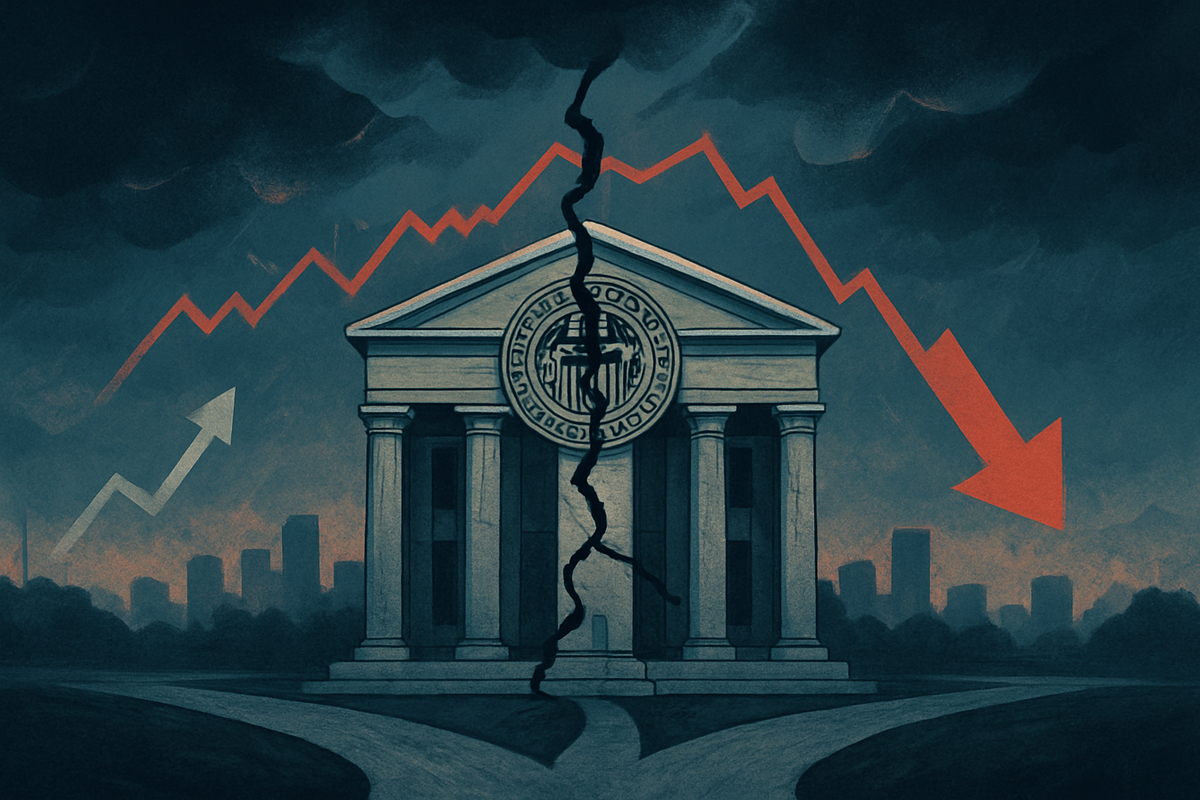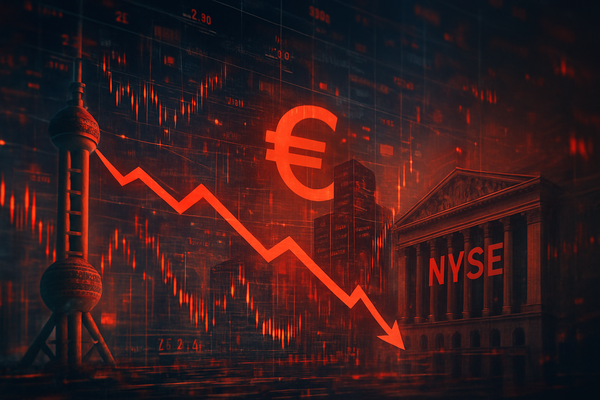Federal Reserve's Internal Rift: A December Rate Cut Hangs in the Balance, Signaling Monetary Policy Uncertainty

The Federal Reserve finds itself at a critical juncture, grappling with a pronounced division among its officials regarding the necessity and timing of a December interest rate cut. This internal debate, laid bare in recent discussions, introduces a significant layer of uncertainty into financial markets and the broader economy. What was once seen as a near-certainty by many market participants – a substantial rate reduction to ease financial conditions – has now become a contentious point within the Federal Open Market Committee (FOMC). This discord signals a recalibration of market expectations, suggesting that the era of "higher-for-longer" interest rates may persist, with profound implications for borrowing costs, investment decisions, and economic growth in the coming months.
Deepening Divisions Within the FOMC: A Closer Look
The chasm within the Federal Reserve reflects fundamentally differing views on the most pressing risks facing the U.S. economy: whether the primary threat stems from persistent, above-target inflation or from an increasingly vulnerable labor market. Recent FOMC minutes have explicitly acknowledged "strongly differing views," a stark departure from the usually unified front the central bank strives to present. This internal disagreement complicates the Fed's forward guidance, making its future policy path notoriously difficult to predict and leading to heightened volatility across asset classes.
The timeline leading to this moment has been characterized by a series of economic data releases and evolving market sentiment. For much of the year, robust economic growth and a resilient labor market, coupled with stubbornly high inflation, led the Fed to maintain a hawkish stance, implementing a series of aggressive rate hikes. However, as inflation showed signs of moderating and concerns about a potential economic slowdown began to surface, market expectations for rate cuts in late 2024, particularly in December, surged. The CME FedWatch Tool, a widely followed indicator, had previously shown probabilities for a December rate cut as high as 95%. However, following revelations of the internal division, these probabilities have plummeted significantly, now fluctuating between 29.6% and 53% by mid-November, indicating a dramatic shift in market sentiment.
Key players in this debate include the various regional Federal Reserve Bank presidents and governors, whose diverse economic perspectives and regional insights contribute to the differing viewpoints. "Hawks" within the committee, concerned about the potential for inflation to re-accelerate, advocate for maintaining higher rates for longer or even further hikes to ensure price stability. Conversely, "doves" express apprehension about the cumulative impact of past rate hikes on economic growth and employment, arguing for rate cuts to prevent an unnecessary downturn. Chairman Jerome Powell's ability to forge a consensus amid these strong opinions will be crucial for the Fed's credibility and effectiveness. Initial market reactions have been swift and discernible: the US Dollar (USD) has strengthened, reflecting reduced expectations for rate cuts and making dollar-denominated assets more attractive. Conversely, stock markets have experienced declines and increased volatility as investors grapple with the implications of potentially sustained higher interest rates. Sovereign yields have also climbed in a "risk-off" mood, signaling investor demand for safer assets and concerns about prolonged tight monetary conditions.
Companies on the Cusp: Winners and Losers from Monetary Policy Uncertainty
The ongoing division within the Federal Reserve and the resulting uncertainty surrounding a December rate cut will undoubtedly create a landscape of both opportunities and challenges for public companies across various sectors. Companies highly sensitive to interest rates are particularly exposed to these developments.
Potential Losers:
- Real Estate and Construction: Companies in the housing sector, such as homebuilders like D.R. Horton (NYSE: DHI) and Lennar Corporation (NYSE: LEN), are likely to face continued headwinds. Elevated mortgage rates, which track benchmark interest rates, significantly impact housing affordability. With rates potentially staying higher for longer, demand for new homes could soften, and existing homeowners may be less inclined to sell, further constraining inventory. Similarly, construction companies relying on financing for projects will experience increased borrowing costs.
- Banks and Financial Institutions (Mixed Impact): While higher interest rates generally boost Net Interest Margins (NIMs) for banks like JPMorgan Chase & Co. (NYSE: JPM) and Bank of America Corporation (NYSE: BAC), prolonged uncertainty and a potential economic slowdown could lead to increased loan defaults and reduced loan demand. The immediate impact of a delayed rate cut might be positive for NIMs, but a prolonged period of high rates could eventually stifle economic activity, impacting overall loan growth and asset quality.
- High-Growth Technology Companies: Many technology companies, especially those with significant future earnings potential but currently relying on debt financing for expansion, could struggle. Higher interest rates increase the cost of capital, making it more expensive to fund research and development or acquire other companies. This could put pressure on valuations for companies like Tesla, Inc. (NASDAQ: TSLA) or emerging tech startups.
- Consumer Discretionary: Companies reliant on consumer spending for big-ticket items, such as automotive manufacturers like General Motors Company (NYSE: GM) or retailers of luxury goods, could see demand wane as consumers face higher borrowing costs for cars and other financed purchases. Reduced disposable income due to higher loan payments could also impact sales.
Potential Winners:
- Value Stocks and Dividend Payers: In an environment of higher interest rates and economic uncertainty, investors often gravitate towards more stable, established companies with strong balance sheets and consistent dividend payouts. Sectors like utilities, consumer staples, and mature industrial companies might see increased interest. Companies like Procter & Gamble Co. (NYSE: PG) or Duke Energy Corporation (NYSE: DUK) could be viewed as safer havens.
- Companies with Strong Cash Flows and Low Debt: Businesses that generate substantial free cash flow and have minimal reliance on external financing are better positioned to weather a "higher-for-longer" rate environment. These companies can continue to invest in growth or return capital to shareholders without being burdened by rising interest expenses.
- Financial Institutions (Specific Segments): While overall banking could face mixed impacts, certain segments might benefit. Wealth management firms and asset managers, for example, might see increased inflows as investors seek guidance amidst volatility. Furthermore, banks with robust deposit bases and less reliance on wholesale funding could maintain stronger profitability.
- Energy Sector: Companies in the energy sector, such as Exxon Mobil Corporation (NYSE: XOM) or Chevron Corporation (NYSE: CVX), often have less direct sensitivity to interest rate fluctuations compared to other sectors. Their performance is more closely tied to global commodity prices and geopolitical events. If higher rates contribute to a stronger dollar, it could also make oil cheaper for international buyers, potentially boosting demand.
The prolonged period of uncertainty will force many companies to re-evaluate their capital expenditure plans, debt management strategies, and overall growth projections. Those with agile financial strategies and robust balance sheets will be better equipped to navigate the turbulent waters of a divided Federal Reserve.
Wider Significance: A Precedent for Future Monetary Policy and Economic Stability
The current division within the Federal Reserve regarding a December rate cut transcends a mere policy disagreement; it signals a critical juncture in U.S. monetary policy, with wider implications for economic stability, regulatory oversight, and global financial markets. This internal debate reflects a deeper struggle to navigate an economy still reeling from the aftershocks of unprecedented fiscal and monetary interventions.
This event fits into broader industry trends marked by persistent inflation, supply chain vulnerabilities, and a tight labor market that has defied expectations of a rapid cool-down. The Fed's dual mandate—to achieve maximum employment and price stability—is being tested like never before. The differing views among officials highlight the complexity of these intertwined challenges, where aggressive inflation fighting could inadvertently trigger a recession, while premature easing could re-ignite price pressures. The "higher-for-longer" narrative, which is gaining traction, suggests a fundamental shift from the era of ultra-low interest rates that characterized much of the post-2008 financial crisis period. This shift has ripple effects on competitors and partners, particularly for emerging markets that often experience capital outflows when U.S. interest rates rise, as investors seek higher returns in dollar-denominated assets. This can lead to currency depreciation and increased borrowing costs for these nations.
Regulatory and policy implications are also significant. The internal discord could lead to increased scrutiny from Congress and the public regarding the Fed's independence and decision-making processes. If the Fed's credibility is perceived to be waning due to a lack of consensus, it could make future policy implementation more challenging. Furthermore, the prolonged uncertainty could prompt regulatory bodies to reassess stress tests for financial institutions, ensuring they are adequately prepared for sustained periods of higher interest rates and potential economic volatility.
Historically, periods of significant internal division within the Fed are rare but often precede pivotal shifts in monetary policy. For instance, debates in the early 1990s over inflation targeting and the appropriate pace of rate adjustments marked a turning point in the central bank's approach to price stability. While not an exact parallel, the current situation echoes these past moments of introspection and recalibration, underscoring the immense pressure on policymakers to make decisions with far-reaching consequences. The absence of timely and complete economic data, exacerbated by events like government shutdowns disrupting data releases, further complicates this delicate balancing act, leaving policymakers "flying blind" at a critical juncture.
What Comes Next: Navigating the Uncertain Path Ahead
The path forward for the Federal Reserve and the financial markets is fraught with uncertainty, with several short-term and long-term possibilities emerging from the current internal division. In the immediate future, the market will be hyper-focused on upcoming economic data releases, particularly inflation reports and labor market statistics. Stronger-than-expected inflation figures or a surprisingly resilient job market could embolden the "hawks" within the FOMC, further diminishing the likelihood of a December rate cut and potentially even opening the door for future rate hikes. Conversely, signs of a significant economic slowdown or a rapid deceleration in inflation could bolster the "doves'" arguments for easing monetary policy.
Short-term, we can anticipate continued market volatility. Investors will scrutinize every statement from Fed officials, seeking clues about the direction of monetary policy. This heightened sensitivity to economic data and central bank rhetoric will necessitate strategic pivots for investors and businesses alike. Companies with significant debt burdens may need to prioritize deleveraging or refinancing at current rates to mitigate future interest rate risk. For sectors like real estate and automotive, adaptations might include adjusting pricing strategies or offering incentives to stimulate demand in a higher-rate environment.
Long-term possibilities include a prolonged period of "higher-for-longer" interest rates if inflation proves more stubborn than anticipated, or if the Fed prioritizes maintaining a restrictive stance to ensure inflation returns firmly to its 2% target. This scenario would continue to exert pressure on growth-oriented companies and those with high leverage, while potentially benefiting value stocks and sectors less sensitive to interest rate fluctuations. Alternatively, if economic growth falters more rapidly than expected, the Fed might be compelled to cut rates more aggressively in early 2025, even if some inflation concerns persist.
Market opportunities may emerge for agile investors who can identify companies resilient to higher rates or those poised to benefit from specific economic scenarios. For instance, companies with strong pricing power and robust balance sheets could outperform. Challenges will include managing interest rate risk, navigating potential economic slowdowns, and adapting to a less predictable monetary policy environment. Potential scenarios range from a "soft landing," where inflation cools without a severe recession, to a "hard landing," characterized by a significant economic downturn. The outcome will largely depend on the interplay between economic data, global events, and the Fed's ability to achieve internal consensus and communicate a clear policy direction.
Wrap-Up: A Pivotal Moment for Monetary Policy and Market Direction
The profound division among Federal Reserve officials regarding a December rate cut marks a pivotal moment for U.S. monetary policy and the trajectory of financial markets. The key takeaway is the increased uncertainty surrounding the Fed's immediate actions, which has led to a significant recalibration of market expectations away from imminent rate cuts. This internal debate underscores the complex economic landscape, where policymakers are torn between the imperative to tame persistent inflation and the risk of stifling economic growth and employment. The "higher-for-longer" interest rate narrative is gaining momentum, signaling a potential shift in the broader economic environment that will impact borrowing costs, investment decisions, and corporate profitability across various sectors.
Moving forward, the market will remain highly sensitive to incoming economic data, particularly inflation and labor market reports. These data points will serve as crucial indicators, influencing the balance of power between the "hawks" and "doves" within the FOMC. Investors should assess their portfolios for interest rate sensitivity, favoring companies with strong balance sheets, consistent cash flows, and less reliance on external financing. Sectors like real estate and high-growth technology may continue to face headwinds, while value stocks and dividend payers could offer relative stability.
The lasting impact of this internal debate could be a more cautious and data-dependent Federal Reserve, potentially leading to a less predictable monetary policy path in the future. The challenge for Chairman Powell will be to rebuild consensus and provide clear forward guidance to prevent further market volatility and maintain the Fed's credibility. What investors should watch for in the coming months are not just the official pronouncements from the Fed, but also the nuanced language used by individual governors and regional presidents, as these will offer valuable insights into the ongoing internal discussions and the likely direction of monetary policy into 2025. The era of easy money appears to be firmly in the rearview mirror, and navigating the new landscape will require vigilance and adaptability.
This content is intended for informational purposes only and is not financial advice



